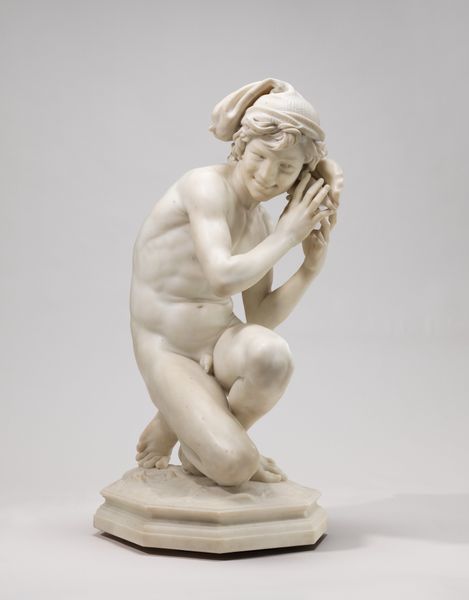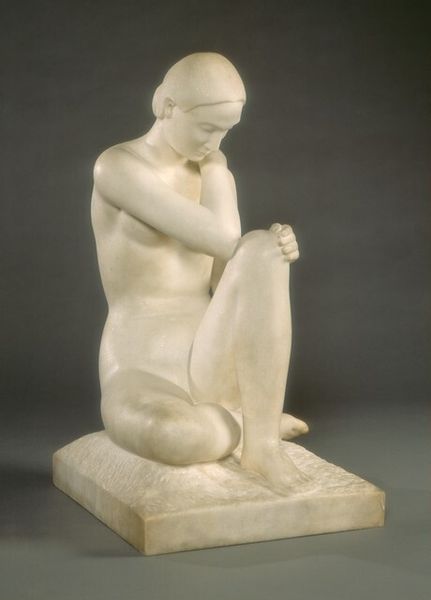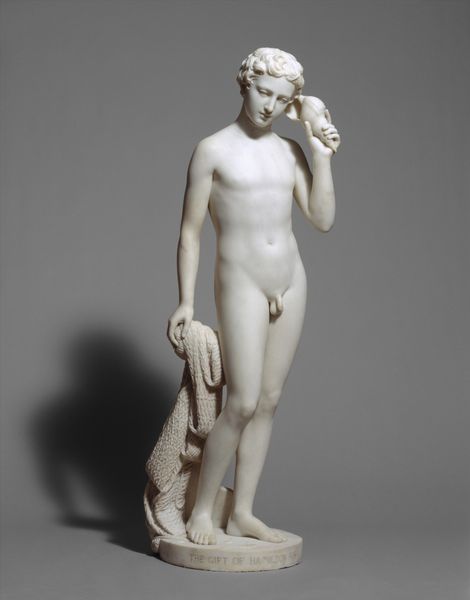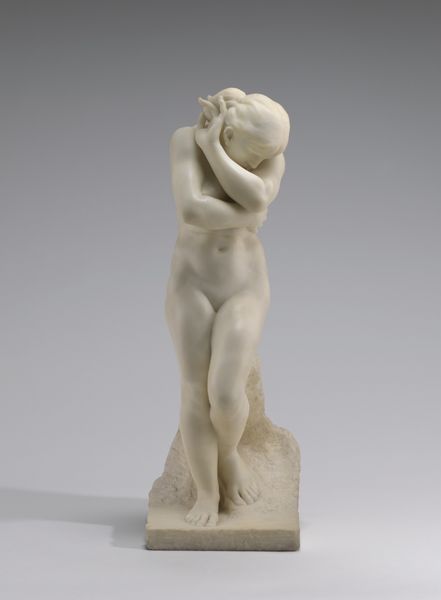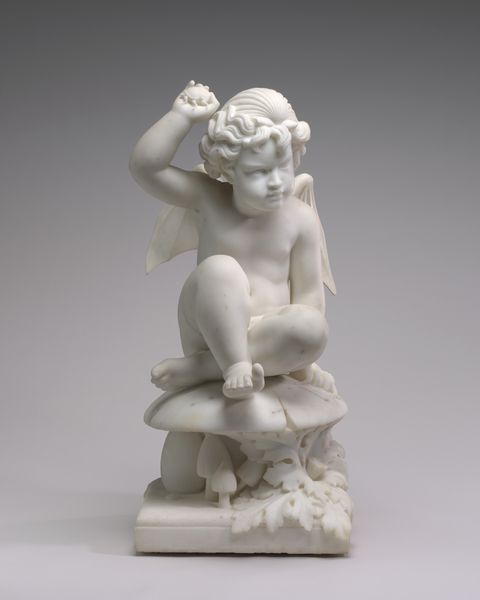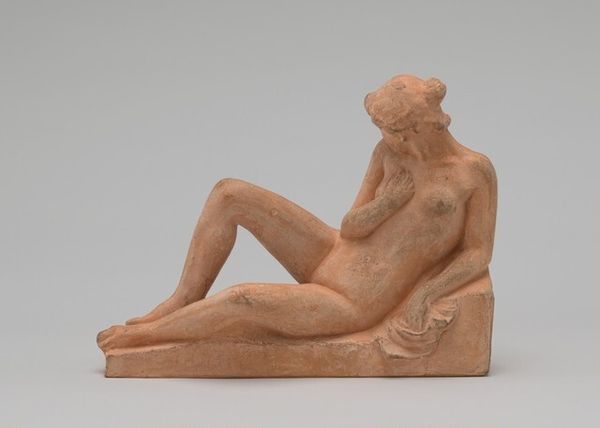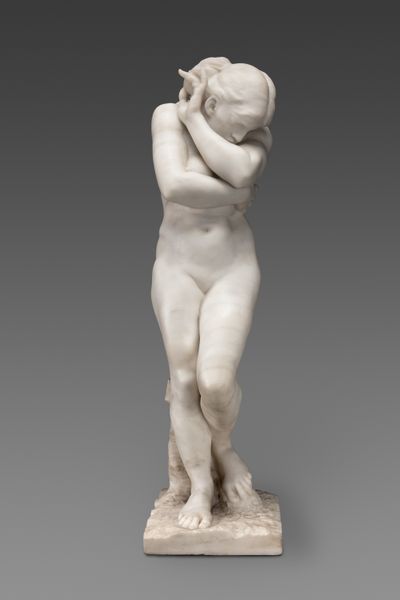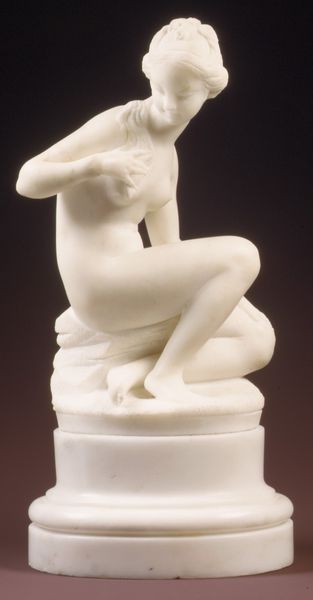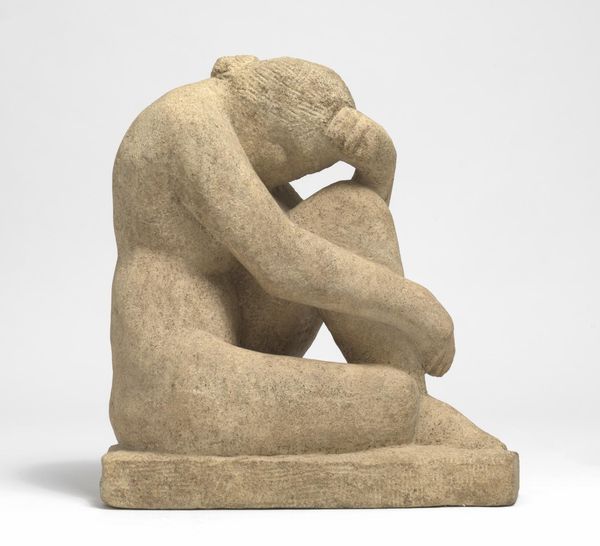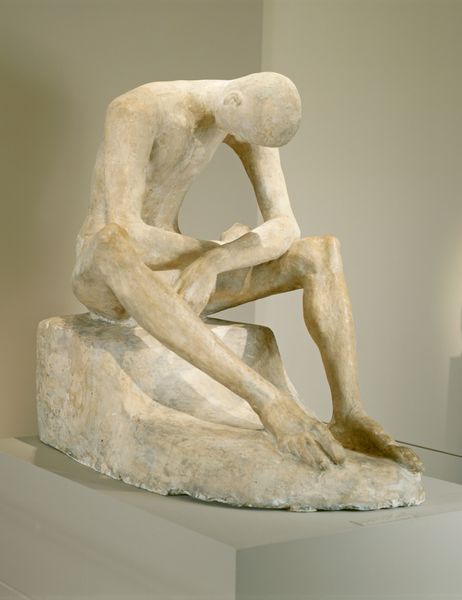
sculpture, marble
#
sculpture
#
marble
#
nude
#
modernism
Dimensions: overall: 21.6 x 17.2 x 12.7 cm (8 1/2 x 6 3/4 x 5 in.)
Copyright: National Gallery of Art: CC0 1.0
Curator: This is Aristide Maillol's "La Méditerranée," created around 1906. It’s carved from marble. Editor: My first impression is one of immense serenity. The downward gaze, the flowing lines—there's a feeling of inward reflection, even melancholy, evoked through the careful composition. Curator: Maillol aimed to return to classical forms and a celebration of the human body after what he saw as the decadence of late 19th-century sculpture. The smooth marble contributes to the sense of timelessness, and links to an idealized past. Editor: Marble is fascinating; think of the labour involved, the quarrying, the sculpting by hand, it gives this sculpture an intrinsic social value beyond just aesthetics. I am intrigued to understand how Maillol, a Modernist sculptor, perceived labor’s value in its process. Curator: Her pose—seated, head resting on her hand—recalls classical depictions of muses or allegorical figures. The title also evokes a connection to the sea, which, throughout history, has represented both tranquility and turbulent emotion. Consider that visual symbolism: the ocean has meant something from time immemorial until today. Editor: Exactly! Material and myth working together, even competing for your attention. How interesting the production, how simple and powerful its resulting form. Curator: Indeed, she could be an embodiment of the Mediterranean itself: a source of life, beauty, and profound contemplation. Maillol simplifies the form, eschewing fussy detail for a sense of essential, eternal womanhood. Editor: It is interesting that Maillol chose marble and this subject, especially for his own time. The use of such classical reference emphasizes the inherent skill of carving from this material but might also hint at anxieties and a deep yearning to create something eternal as a bulwark to change. The scale, the finish, the fact that Maillol would choose such traditional material raises a key challenge about modernity. Curator: So, it's more than just a figure; it's a touchstone connecting us to ancient traditions of beauty and philosophical inquiry. The statue invites us to reflect on how visual memory functions across the ages. Editor: And, considering the resources poured into such art, one is made to reflect how artistic creation and labor contribute meaning to these continuities. It almost asks questions of itself through both its materials and forms.
Comments
No comments
Be the first to comment and join the conversation on the ultimate creative platform.
